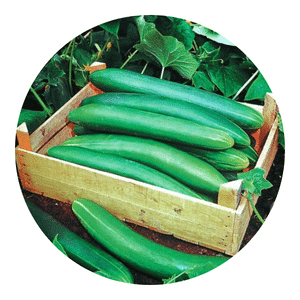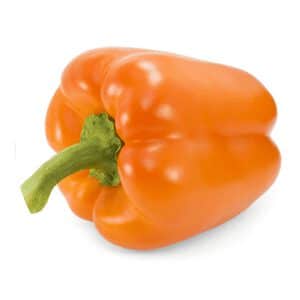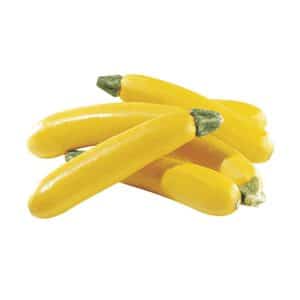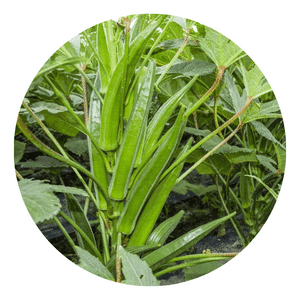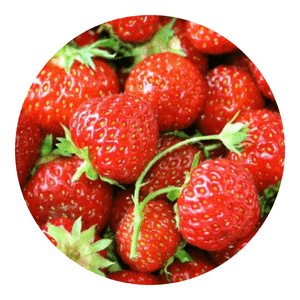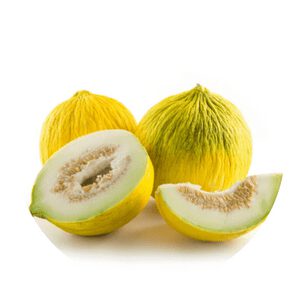What Vegetables to Plant in Spring in Texas
As the weather warms up and the days become longer, it’s time to start thinking about planting a garden in Texas!
Whether you’re an experienced gardener or just getting started, knowing what vegetables to plant in the spring is essential for success.
With the right combination of soil and sunlight, you can have a thriving garden full of healthy produce all season long.

Texas Spring Menu
Planting in Texas
Planting in Texas is a great way to create a garden full of delicious vegetables for you and your family.
Springtime is the perfect time to start planting in the Lone Star State.
With its warm climate and long growing season, Texas has some of the best conditions for successful vegetable gardening.
Texas gardeners have many options when it comes to what vegetables they can plant this spring.
From greens such as kale, spinach, and lettuce to staples like potatoes, tomatoes, peppers, squash, carrots and onions – there are plenty of choices for creating a fruitful garden.
For those looking for something unique or unusual in their gardens, eggplant and okra are two popular choices that thrive in Texas’s climate.
No matter what type of vegetables you decide to plant this year in Texas they will all need consistent watering and care throughout the growing season.
Texas Climate:
Texas is a state with a wide range of climates, from the sweltering heat of south Texas to the cold winters of north Texas.
This climate variation means that the state’s residents have to know what vegetables can grow in their specific environment and when to plant them for best results.
Spring is an ideal time for planting many vegetables in Texas due to its generally temperate weather conditions and longer hours of daylight.
Knowing which vegetables are suitable for your climate zone will help ensure that you have a successful harvest this season.
With so many different types of vegetables to choose from — including tomatoes, peppers, beans, squash, cucumbers and okra — it can be overwhelming trying to decide what works best in your area.
Read on for information about what vegetables will thrive during springtime in Texas.
Popular Spring Vegetables:
Spring is just around the corner and with it comes an abundance of fresh vegetables to enjoy!
In Texas, spring is a great time to start planting your garden.
If you’re looking for ideas on what vegetables to plant in the springtime, here are some of the most popular ones that can be grown in Texas.
The warm weather of springtime makes it easier to grow leafy greens such as kale and spinach.
These leafy greens can be planted directly into soil or started indoors if needed.
Carrots are also an ideal choice for planting in early spring and will produce sweet roots by summer.
Beets are another root vegetable that grows well during this time and can be harvested when they reach a suitable size.
If you’re looking for something sweeter, tomatoes are always a good choice for growing in the warmer months of springtime in Texas.
Tomato
Tomatoes are a must-have vegetable to plant in the spring in Texas.
Tomatoes are known for their versatility and hardiness, making them an ideal choice for Texas gardens.
Not only can they be used in salads, sandwiches, or sauces – but they can also make a delicious addition to many recipes.
With proper care and attention, Texas gardeners will find that tomatoes thrive in the warm climate of the Lone Star State.
Texas is home to some of the most popular varieties of tomatoes such as Roma, Big Boy, Celebrity and Beefsteak.
Gardeners should start by selecting seeds for their desired variety before planting them during late spring after any chance of frost is gone.
After planting the seeds directly into soil or starter pots, tomatoes need full sun and regular watering until seedlings mature and produce fruit.
In Texas’s soil so long I’ve stayed, come spring, come veggies that I shall raise. Radishes, turnips, and carrots too, How the rows will be so much to view! Eggplants in purple, peppers in red, Tomatoes of shape and color quite spread. Cabbages big and bright with green hue; Beans and squash no one could eschew!
Chappy The Gardener
Cucumber
Cucumbers are a popular vegetable to plant in the spring in Texas. They are easy to grow and require minimal care, making them an ideal choice for beginner gardeners.
Cucumbers thrive best when soil temperatures reach at least 70 degrees Fahrenheit, which can be achieved by planting cucumber seeds directly into the ground after all danger of frost has passed.
For maximum yields, place cucumber seeds 1 inch deep and space plants 18-24 inches apart.
When they start to mature, pick cucumbers often so that new ones will continue to form throughout the season.
In order to produce evenly sized fruit, most varieties should be trellised or tied up on a fence as they grow vertically.
If this isn’t done then fruits may become bent or crooked due to their weight on the vine.
Bell Pepper
Bell pepper is a popular vegetable for home gardeners in Texas to grow during the spring season.
This member of the nightshade family is inexpensive and easy to plant, making it an attractive option for novice gardeners.
Plus, bell peppers are packed with essential vitamins and minerals that make them an ideal addition to any meal or snack plate.
Texas’ mild climate makes growing bell peppers relatively simple; however, there are a few things to keep in mind when planting this particular crop.
First and foremost, be sure to add plenty of compost or fertilizer into the soil prior to planting as this will improve soil nutrition levels and give your plants a much-needed boost.
Additionally, depending on your region’s climate, you may want to consider using a row cover over your plants during cooler nights so they can better endure colder temperatures without suffering damage.
Eggplant
Eggplant is a vegetable that can be planted in the spring in Texas.
It is best to plant eggplant seedlings outdoors beginning in late March or early April, as soil temperatures should be at least 65 degrees Fahrenheit for optimum germination.
Eggplants need full sun and well-draining soil with plenty of organic matter added.
When planting the seedlings, dig a hole deep enough to accommodate the entire root ball and water thoroughly after planting to ensure good root establishment.
For optimal growth, provide a regular supply of moisture throughout the growing season, especially during any extended periods of dry weather.
Eggplants also benefit from an application of fertilizer every two weeks; use an all-purpose fertilizer or one specifically formulated for vegetables.
Squash
Squash is one of the most popular vegetables to plant in spring in Texas.
This versatile vegetable adds a delicious and nutritious element to any garden or plate.
With over 25 types of squash available, there are varieties for any climate, soil condition, and occasion.
In Texas, some of the best varieties ideal for spring planting include zucchini, crookneck squash, butternut squash and pumpkin.
Zucchini is a great option for small gardens due to its compactness and ability to produce large amounts of fruit quickly.
Crookneck squash offers a unique flavor when cooked that many find delightful as well as an attractive yellow coloration on the outside when picked at peak ripeness.
Butternut squash is known for its sweet taste and smooth texture making it great for baking into pies or roasting with other vegetables.
Okra
Okra is a warm-weather vegetable that is perfect for planting in Texas during the spring season.
The fast-growing vegetable can be planted as early as February when the soil temperature reaches at least 70°F, and harvested by the end of summer.
Though okra may be a bit more challenging to grow than other vegetables due to its sensitivity to cold weather, it will thrive in hot climates like Texas if planted at the right time.
Texas has unique soil types ranging from sandy loam to clay, but okra loves rich soils like these that are full of organic matter and well aerated.
When planting okra, stakes should also be used to support the plants since they can easily reach heights of four feet or more!
It’s important not to overcrowd your plants with too many seeds so that each one gets enough room and sunlight when growing.
Strawberry
Strawberries are a popular fruit that can be grown in Texas during the spring months.
From April to June, this is the optimal time to plant them, and with proper care, you can enjoy sweet and juicy fruits by late spring or early summer.
Planting strawberries involves selecting an area with well-draining soil and plenty of sunlight.
While planting new strawberry plants, try to space them twelve inches apart from one another so they have enough room to grow.
To ensure successful growth, it’s important to keep the soil moist but not waterlogged as this can lead to root rot.
After about two weeks, you will start to see new leaves emerging from the plants which means your strawberries are growing!
As your plants continue growing in size over the spring months, make sure to weed out any unwanted grass or weeds that might be competing for nutrients with your strawberry plants.
Garlic
Garlic is a popular vegetable to plant in the spring in Texas. It’s an easy crop to grow and can be harvested throughout the summer and fall months.
Garlic has many uses, from adding flavor to dishes to being used as a medicinal remedy for colds and other ailments.
Planting garlic in Texas at this time of year gives it enough time to mature before the hot summer temperatures arrive.
When planting garlic bulbs in Texas, look for larger cloves with dry, papery skin.
The cloves are planted 1-2 inches deep and 4-6 inches apart so they have room to grow without overcrowding each other.
Mulch can be added around them after they’re planted as well which helps retain moisture while keeping weeds at bay.
Once established, garlic requires regular watering but not too much or else it can develop rot or mold issues during hot weather conditions.
Considerations for Planting:
When considering what vegetables to plant in spring in Texas, there are many factors that should be taken into account.
Firstly, it is important to consider the climate and soil conditions of the area you plan to grow your vegetables in.
Is the soil nutrient-rich or does it need additional fertilizer?
Are there any hardiness zone restrictions for certain plants?
Furthermore, access to water and sunlight will be key elements for a successful harvest. If you have limited space for gardening, consider vertical options such as trellises or hanging baskets.
Additionally, picking varieties that can withstand both extreme heat and cold temperatures is essential when choosing which vegetables to plant in spring.
In addition, local farmers markets can provide valuable resources when selecting which vegetables will be best suited for your garden.
Soil Preparation and Care:
Soil preparation and care are essential components of successful vegetable gardening.
If you want to ensure that your Texas vegetable garden is flourishing with health, hearty produce come springtime, it is important to properly prepare the soil for planting season.
For starters, it should be noted that soil type can vary greatly across Texas; however, most soils in the state have a high percentage of clay content which can make them difficult to work with.
To improve the overall quality of your soil, consider adding some compost or other organic matter.
This will help keep moisture levels intact and provide more nutrients for your vegetables to absorb.
Additionally, conduct a soil test before you begin planting – this will let you know what minerals or fertilizers might be needed in order for plants to grow optimally.
Companion Planting:
Companion Planting: Growing Your Spring Texas Vegetables Together for Maximum Success.
Growing vegetables is a rewarding experience, and no better place to do so than in the great state of Texas.
From the warm weather to the nutrient-rich soil, you can expect an abundance of delicious produce with companion planting techniques.
Companion planting is a useful practice that promotes plant health through the usage of multiple plants growing close together.
Not only does it make your garden look attractive and vibrant, but also it helps to maximize space as well as enhance flavor and pest control in crops.
When planning your spring vegetable garden in Texas, consider which combinations of veggies grow best together for maximum success.
Organic Vegetables Seeds Texas
If you are looking for an easy way to get started growing your own vegetables this spring in Texas, the Click to Grow shop is a great choice.
This online store specializes in organic seed varieties that are specifically suited to the climate and soil of Texas.
They offer a wide selection of heirloom, open-pollinated seeds that are both non-GMO and non-hybrid. With their convenient shipping options, it’s easier than ever to buy organic seeds online from Click to Grow.
At Click to Grow, they understand how important it is for gardeners in Texas to choose the right vegetable varieties for their gardens.
They have done the research so you don’t have to—their website provides detailed information about each variety and which vegetables will thrive in different parts of the state.
In conclusion, Texas offers an abundance of vegetables to plant in the spring.
Whether you have a large garden or are just getting started, there is something for everyone.
From cool-season veggies like kale and spinach to warm-season favorites like squash and tomatoes, planting in the spring ensures that you will be able to harvest throughout the summer and into fall.
Take into account your climate zone, soil type, and amount of sunlight when determining what will grow best in your area.
Click To Grow
Helps Us Grow – Share If You Like






